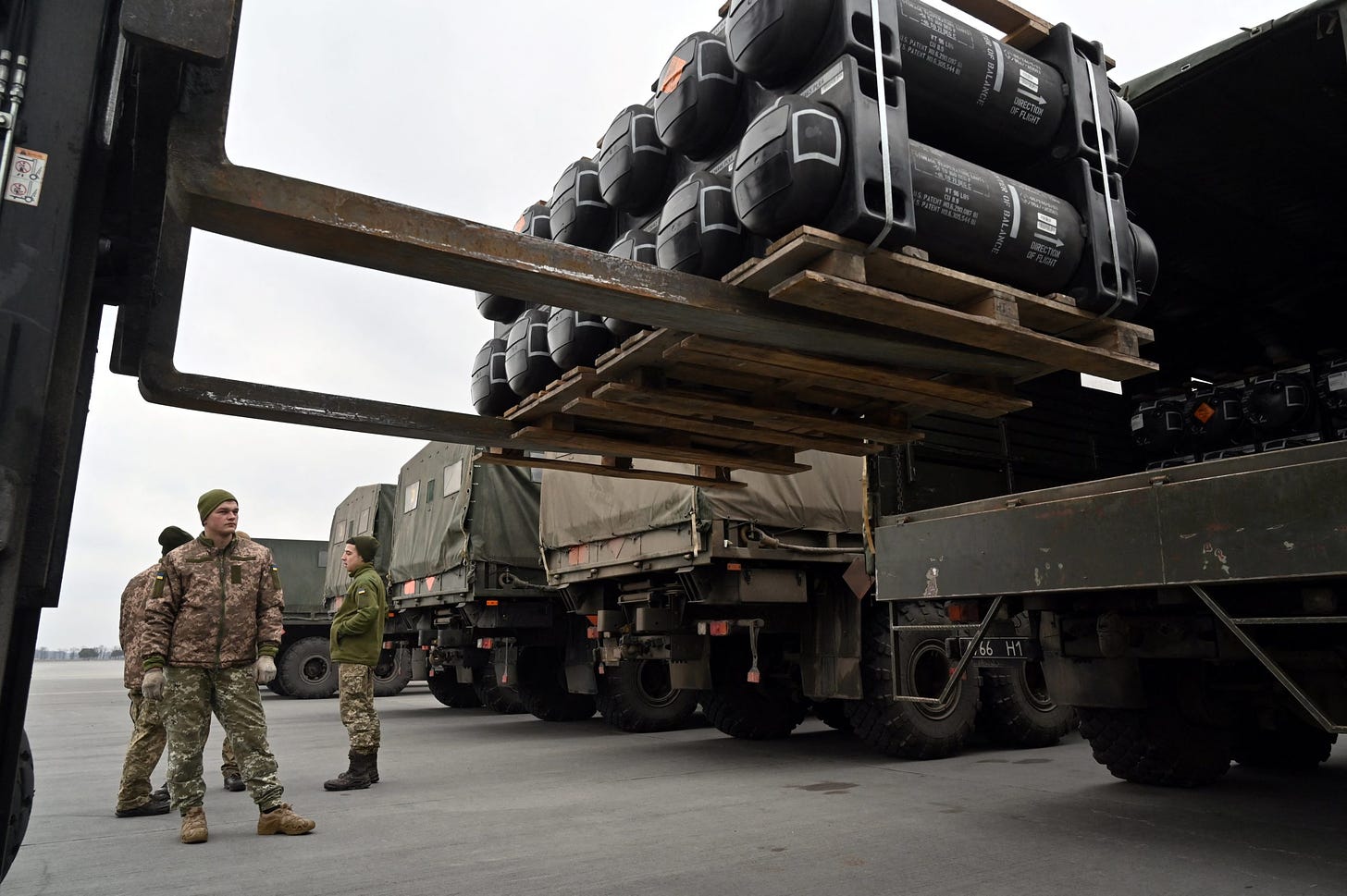Biden Must Invoke the Defense Production Act
Both the American and the Ukrainian arsenals should be full—and Russia should know it.

The political objective of the Biden administration is to keep Ukraine free and whole. To that end, the administration has sent large quantities of arms—especially Javelin anti-tank missiles, Stinger anti-aircraft missiles, and small-arms ammunition—to Ukraine.
But it has not been enough. Ukraine needs more arms. As Volodymyr Zelensky told 60 Minutes last week, the United States and other countries supportive of Ukraine
have to supply weapons to Ukraine as if they were defending themselves and their own people. They need to understand this: If they don’t speed up, it will be very hard for us to hold on against this pressure. . . . We think this will be a new wave of this war. We don’t know how much [Russian weaponry] there will be. But we understand that there will be many times more than there is now. . . . [All] depends on [how fast] we will be helped by the United States. To be honest, whether we will be able to [survive] depends on this. I have 100 percent confidence in our people and in our armed forces. But unfortunately, I don’t have the confidence that we will be receiving everything we need.
The Pentagon’s own stockpiles of certain weapons systems are running low, due in part to a decade of budgetary dysfunction and shortsightedness; this may be a factor in why the administration has not sent more military aid to Ukraine. If so, this is exactly the kind of contingency for which the Defense Production Act exists.
The law gives the president emergency authority to direct the private sector to produce goods the government needs at a time of crisis; its primary purpose is to enable the emergency production of military goods at a time of war. President Donald Trump activated it (or, at least sort of activated it) in 2020 to enhance America’s COVID response, which was not what the law was originally designed for—it is, after all, the Defense Production Act. And President Joe Biden recently invoked the law “to secure American supply chains for the critical materials that go into batteries for electric vehicles and the storage of renewable energy,” which also extends beyond the law’s purpose. (Biden did not, however, go nearly as far as a large coalition of environmental groups urged last month; they wanted him to use the law to take much more significant action to combat climate change.)
It is critically important that what goes out of the U.S. inventory in support of Ukraine is replenished immediately. This will ensure that Ukraine has what it needs as long as the war continues, and will send a signal to Russia that, as long as the Ukrainians are willing to fight, the United States will make sure that they have the weapons to fight with. War is a contest of wills, and a full American inventory ready to be shipped to Ukraine simultaneously encourages the will of the Ukrainians and dampens the will of the Russians.
How much are we talking? Most military weapons have a low per-unit cost. The financial burden is on the development side—that is to say, producing the first unit costs most of the money, and the ones after that are by comparison much cheaper. The Javelin, for example, runs about $250,000 a pop, which may sound like a lot, but in terms of a cost-exchange ratio—i.e., the cost of the weapon against the cost of what it’s shooting at—a Javelin is just a fraction of the cost of a Russian T-72 tank. That’s a cost worth paying.
Among the weapons that Ukraine needs now, in addition to the Stingers and Javelins most often talked about, are ammunition, rocket-launchers, land-based anti-ship cruise missiles, tanks, and long-range missiles—both surface-to-surface and surface-to-air. And because the Russians mined the path of their retreat to make eastward movement difficult for the Ukrainians, mine-resistant and mine-clearing vehicles and equipment are needed, too.
The evolution of the war over the last few weeks means that two arguments against sending more arms to Ukraine have become irrelevant. First, with western Ukraine secure—for now—the argument that it’s too difficult to transport heavier weapons into Ukraine is void. And second, the notion that sending certain types of arms is “escalatory”—the Defense Department’s claim a month ago when Poland wanted to involve the United States in a plan to send Poland’s MiGs to Ukraine—is moot now that there are other weapons such as armored vehicles and heavy artillery currently being transported into Ukraine.
American-made tanks are easy to drive but difficult to maintain. So it makes sense to send American ones to former Warsaw Pact countries and ask them to transfer their Soviet-made armored vehicles, with which the Ukrainians are more likely to be familiar, to Ukraine. That requires back-filling the American tank fleet, which the Defense Production Act is perfect for— especially since the war could go so long that the Ukrainians might need American-made tanks. Programs should be launched to train Ukrainians on using American vehicles.
President Biden must invoke the law for the mass production of the weapons Ukrainians are asking for. When President Zelensky begs us to stop sending him aid because he cannot process it anymore, only then will we know that we’ve done enough. Until then, shame on us if we don’t.









